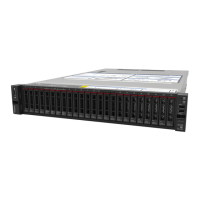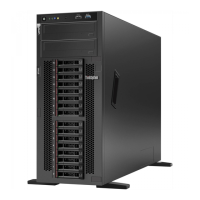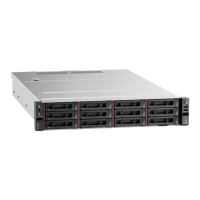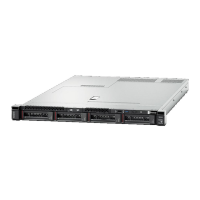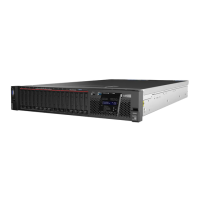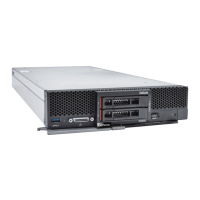Do you have a question about the Lenovo ThinkSystem DM3010H and is the answer not in the manual?
Details system specifications like dimensions, weight, processor, memory, and power supplies.
Information on using ONTAP for system management and a link to further documentation.
Information on Lenovo's commitment to security and where to find advisories.
Identifies components visible on the front of the system, with and without bezel.
Details connectors and components located on the rear of the system.
Explains the status and meaning of various LEDs on the rear of the system.
Step-by-step guide for installing the 2U12 rail kit into a four-post rack.
Comprehensive step-by-step instructions for installing the system hardware and configuration.
Pre-installation checks and requirements, including site preparation.
Instructions for physically installing the system hardware into the rack.
Steps for cabling controllers to the network, drive shelves, and other components.
Final steps for system setup and initial configuration.
Procedure for replacing the system boot media, including software transfer.
Detailed procedure for replacing a controller module and restoring system configuration.
Steps to physically replace the controller module hardware.
Critical post-replacement tasks of recabling and disk reassignment.
Steps for replacing SSD or HDD drives nondisruptively.
Steps for replacing the system chassis, including moving components.
Procedures for moving power supplies, controllers, and drives to a new chassis.
Explains the purpose and use of system-level diagnostics for hardware troubleshooting.
Outlines the necessary time, network, and hardware requirements for running diagnostics.
Procedure to run diagnostics after installation to verify hardware and software functionality.
Procedure to help identify the cause of a system panic using diagnostics.
Provides information on obtaining support, troubleshooting, and gathering necessary data.
| Product Family | ThinkSystem |
|---|---|
| Model | DM3010H |
| Product Type | Storage Array |
| Form Factor | 2U |
| Operating System | ONTAP |
| Drive Bays | 24 x 2.5" |
| Supported Drives | SSD |
| Host Interface | 12Gb SAS |
| Processor | Intel Xeon Processor |
| RAID Levels | 0, 1, 5, 6, 10 |
| Operating System Support | Windows, Linux, VMware |
| Power Supply | Redundant |
| Management | CLI, REST API |
| Storage Controller | Dual Controller |
